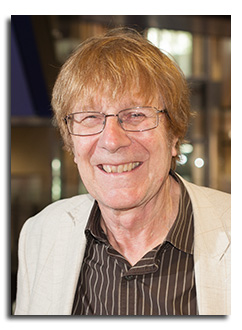
Abstract
Improving the conversion efficiency of production solar cells which use lower grades of silicon (improved metallurgical, cast and continuous Czochralski) is now the most important factor in lowering the cost/kWh of PV. An essential pre-requisite to this is to improve the lifetime of the silicon material from such sources. Much effort is being devoted to this across the world including passivation and advanced gettering.
In this talk I will present some of the work we are doing in Manchester to contribute to this by trying to understand the many different recombination processes in solar grades of silicon which compromise the carrier lifetime. In particular I will talk about the problems in identifying lifetime killers chemically and physically.
I will describe our recent work on what we refer to as nano-precipitates. These are formed from low diffusivity transition metals and indications are that they are quite common in low lifetime areas of cast silicon. Such precipitates are between 2 and 10 nm across and appear to be very powerful recombination centres. They are not well described by Shockley-Read-Hall kinetics and are not similar in electrical behaviour to larger precipitates. They are Coulombically attractive to minority carriers but their majority carrier capture rate is greatly enhanced by tunnelling processes making them potentially formidable lifetime killers.
Finally I will give an example of the measurement of the stages of passivation of transition metals using titanium-hydrogen reactions in silicon as an illustration of how we can use Laplace DLTS to understand the reactions that occur during passivation.
Click here to see all available video seminars.
Click here to go to the SPREE HOMEPAGE.
Brief Bio
Tony Peaker is a Professor Emeritus at the University of Manchester UK. Previously he was the director of Manchester’s Centre for Electronic Materials. His research base is now Manchester’s Photon Science Institute. His research speciality is recombination processes in semiconductors and defects in solids. In recent years he has worked mostly on defects in silicon. His early career was at Ferranti, a UK semiconductor company, where he became manager of the Photon Devices Group. There he worked on Silicon PV and Light Emitting Diodes producing the world’s first commercial visible LEDs in 1968 and the UK’s first solar cells. He then worked on detectors and LASERs for optical communications until he returned to silicon at MEMC (now Sun Edison) and Pure Wafer. His work at the university has included studies of ultra scaled CMOS using germanium and the degradation of high k dielectrics. Professor Peaker has founded two start-ups producing Instrumentation and he was the co-inventor of Laplace DLTS.
